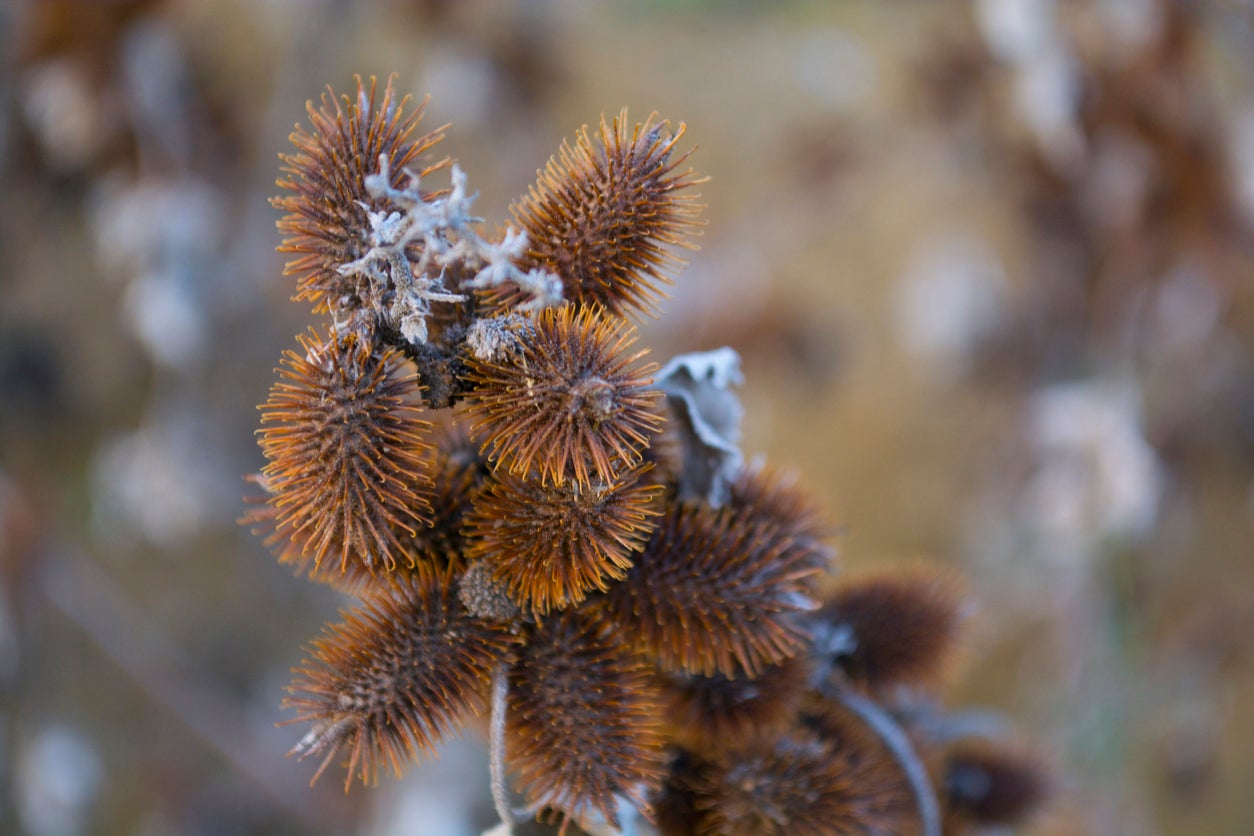Cocklebur Control – Tips For Getting Rid Of Cocklebur Weeds


We've all probably experienced it at one point or another. You take a simple nature walk only to discover hundreds of sharp, little burrs stuck in your pants, socks, and shoes. A cycle in the washer won't get them fully out and it takes an eternity to pick out each burr by hand. What's even worse, though, is when your pets come in from playing outside covered with burrs matted in their fur. These nasty burrs from cocklebur are no doubt an intolerable nuisance. Read on to learn about controlling cocklebur weeds.
About Cocklebur Control
Cocklebur plants are native to North and South America. Spiny cocklebur (Xanthium spinosum) and common cocklebur (Xanthium strumarium) are the two main varieties that can be found throughout the Americas, causing grief to nature lovers, farmers, home gardeners, pet owners, and livestock. Both types of cocklebur produce large burrs with small, sharp hook-shaped tips.
Common cocklebur is a summer annual that grows about 4-5 feet (1 to 1.5 m.) tall. Spiny cocklebur is a summer annual that can grow about 3 feet (1 m.) tall and derives its common name from the small sharp spines on the stems.
Cocklebur can be found anywhere - woodlands, pastures, open fields, along roadsides, in gardens, or landscapes. Because it is a native plant, vast efforts are not taken to eradicate it and it may even be a protected native species in some regions. However, it is listed as a noxious weed in the states of Oregon and Washington because of its damage to wool production and toxicity to livestock, especially calves, horses, and pigs. For humans, it can be a skin irritant.
How to Kill Cocklebur Weeds
Cocklebur weed management can be tricky. Of course, because of its toxicity to animals, it cannot be controlled by grazing, as many other weeds can be. There are, in fact, very few natural biological control methods for getting rid of cocklebur weeds.
The parasitic plant, dodder, may be effective in choking out cocklebur plants, but as this, too, is considered an unwanted landscape plant, it isn’t advisable. Studies have also shown that the Nupserha beetle, native to Pakistan, is effective in controlling cocklebur, but as it’s not a native species, you’ll likely not find the insect in your backyard.
The most effective methods of cocklebur control are hand pulling or chemical controls. Cocklebur plants reproduce easily by seed, which are generally dispersed on water. The seed can lie dormant in the soil for up to three years before ideal conditions cause it to germinate. Yanking out every small seedling as they appear is one option.
Gardening tips, videos, info and more delivered right to your inbox!
Sign up for the Gardening Know How newsletter today and receive a free copy of our e-book "How to Grow Delicious Tomatoes".
Chemical controls take less time. When using herbicides for controlling cocklebur, it is recommended that you use this only as a last resort. Organic approaches are safer and much more environmentally friendly.
-
 Moody Blooms For Spring: 8 Types Of Black Flowers To Add Drama To Spring Displays
Moody Blooms For Spring: 8 Types Of Black Flowers To Add Drama To Spring DisplaysFrom midnight burgundies to inky violets, several types of black flowers can enrich and embolden a spring display. Try these brooding bloomers for a moody garden
By Tonya Barnett
-
 My Homemade Orchid Fertilizer Always Brings More Blooms – Here's The Easy Recipe That Transforms Plants
My Homemade Orchid Fertilizer Always Brings More Blooms – Here's The Easy Recipe That Transforms PlantsScientist-turned-gardener Mary Ellen Ellis shares her tried-and-tested DIY orchid fertilizer recipe, plus more ingredients to try for healthy, happy plants.
By Mary Ellen Ellis